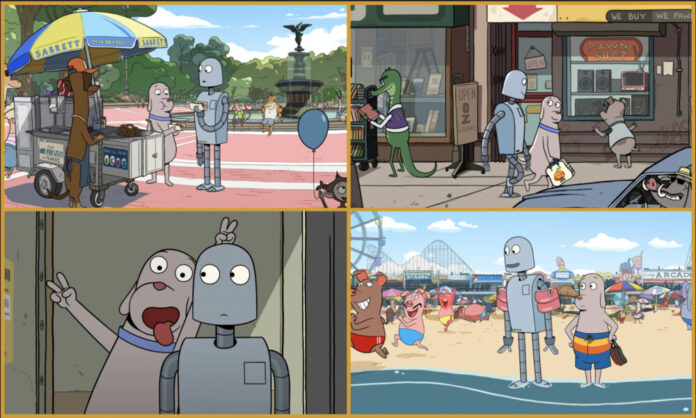|
Getting your Trinity Audio player ready...
|
[adrotate banner=”1026″]
One of the best reviewed and charming animated movies of the year follows the beautiful friendship between an anthropomorphic New York City pooch and his mail-order robot. Directed by acclaimed Spanish helmer, Pablo Berger (Torremolinos 73, Blancanieves), the touching, funny and deceptively simple Robot Dreams is based on a 2007 graphic novel by Chicago-based artist Sara Varon. We had the good fortune to chat with Berger about his new movie, which premiered at Cannes earlier this year, won the Contrechamp grand prize at Annecy and is generating lots of award season buzz around town. Here is what he told us:
Animag: First of all, congrats on creating such a poignant and beautiful movie. Can you tell us how you became interested in Sara Varon’s book?
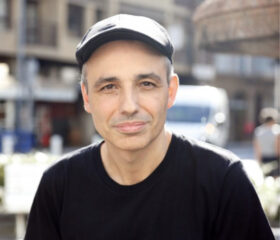
Pablo Berger: I’ve always been a collector of graphic novels and illustrated children’s books. About 13 years ago, I ordered Sara’s book, and I was quite engaged with the story. I thought it was funny and was quite moved when I reached the end of the book. Then, I made my two live-action movies, Abracadabra and Blancanieves. (We directors always procrastinate between projects!) Then, I went back and went through the pages of Robot Dreams, and it brought tears to my eyes as I was able to see the film as I was reading it. So, I sat down and began to write it.
Then, I got a request to be on the jury for the Chicago Film Festival. I had a layover in New York, so I met with Sara there in 2018. It was perfect timing! I never thought I would make an animated movie, but this story really moved me, so I knew I had to do it. Fortunately, my producers were able to finance the film pretty quickly, and I worked with the art director, storyboard artists and did the animatic for one year. It took us a couple of years of animation production and then one more year of post. So, for an animated movie, it all kind of moved quickly.
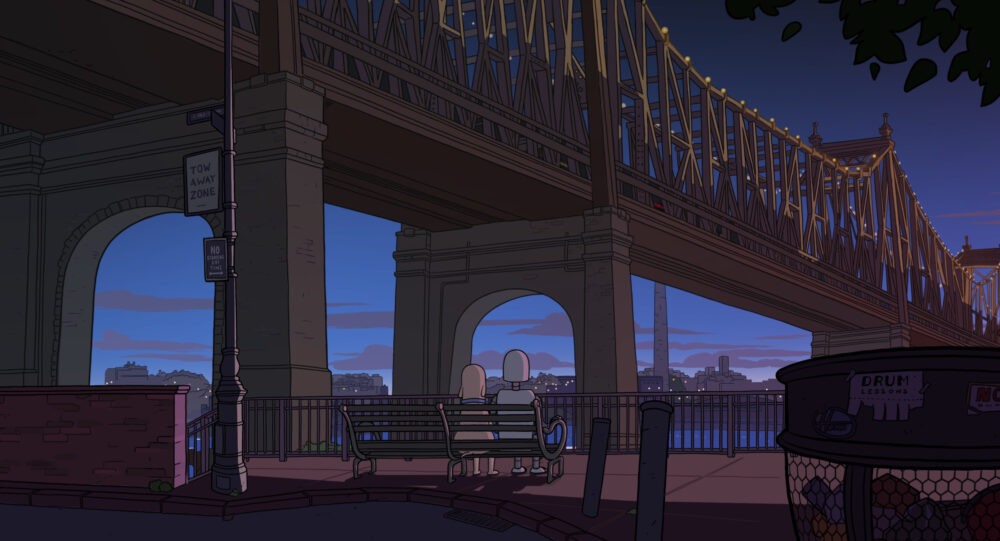
How did you put the animation team together and find the right studio for your project?
My art director, who is like a brother to me, is Jose Luis Agreda; I’m Dog and he is Robot. So as soon as I got the rights to the book, I decided that he was going to be companion on this project. He went to Cartoon Saloon, while we financed this film. We met with [Cartoon Saloon principals] Paul Young and Tomm Moore and we were moving forward with the plan, and then what happened next was COVID. Paul said, “Pablo, I’m sorry, we love this project, but we cannot get on board.” So, my producer and I decided to just create a studio to make this film. We needed a great animation director, and we found Benoît Feroumont in Brussels, who had worked on The Secret of Kells and The Triplets of Belleville. The idea was to get animators from all over the world to come to Madrid and Pamplona, and we managed to put a team of about a hundred together.
Can you talk about the 2D style of animation you were looking for and how you were able to achieve it?
We used Toon Boom Harmony and Storyboard Pro. What we did, [which] was unusual, was that my art director, Jose Luis, and our great storyboard artist, Maca Gil, [and I] … were doing thumbnails and giving [them] to our storyboard artist. Just the three of us. The animatic has the same feeling as the film. After one year, we felt that as a live-action director, I could see the film thanks to the animatic.
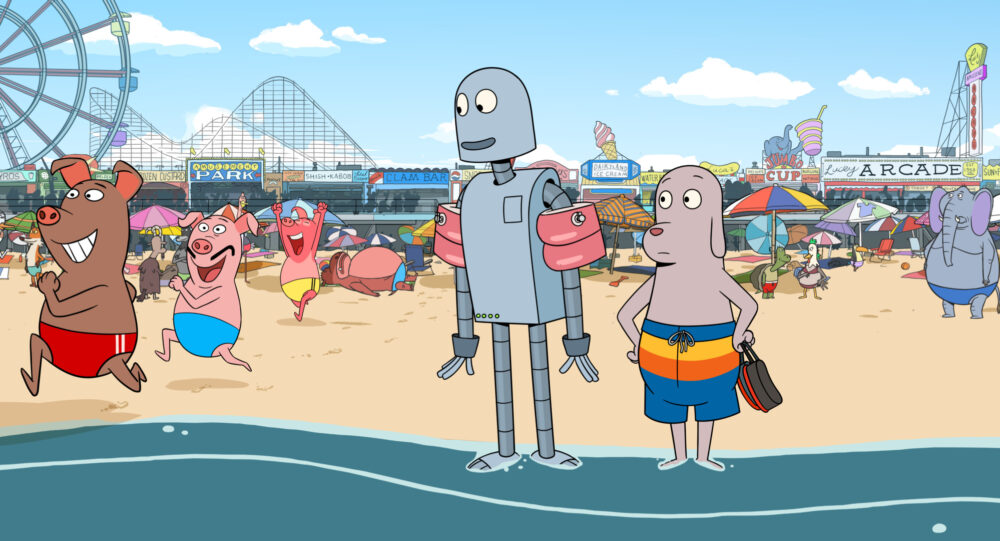
What were some of the things that inspired the look?
I don’t draw myself, but I’ve always loved comic books and they have always been a big influence on my films. My art director is also a comic book artist and our animation director, Benoit, is an extremely well-known comic book artist in France and Belgium. So, for me, this movie is a love letter to comic books. We wanted everything to be in focus. The line has to be alive, and the colors have to be flat. We were always looking for clean graphic lines, a style that was pioneered by the likes of Tintin creator Hergé .
The great thing was that Sara gave me carte blanche from the beginning. She said, “I love your work and [have] seen your films,” so she was not involved in that process and was very supportive of our movie. As a writer, that allowed me to add new things. For example, the first page of six drawings in the book could be ten minutes in the movie. It was really important for me that people would get the same feelings they got from the book from the movie.
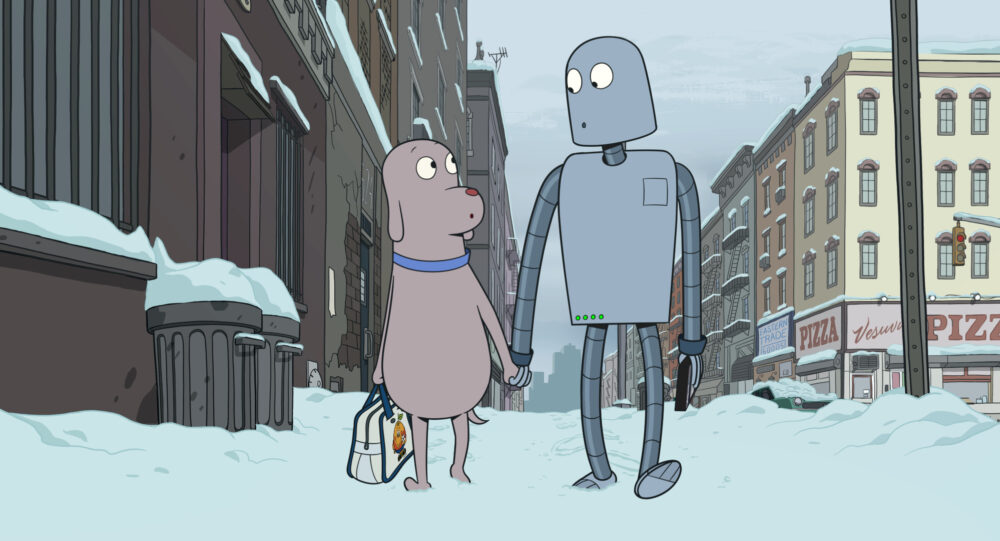
What would you say was your biggest challenge in adapting the book to an animated movie?
To be honest, I feel that all my previous live-action movies had led me to Robot Dreams, and it was a really natural transition for me. I like to storyboard all the shots of my movies. The biggest difference was that producing animation takes a lot longer than shooting live-action, and because the film has no dialogue, I worked with animators instead of actors. I also had to learn about the animation pipeline.
The movie has generated such a warm response from festival audiences and critics. That must have been very gratifying.
It has been such an amazing roller-coaster ride. We had such a wonderful reception at the Toronto Film Festival. We had lots of hugs after the screening. Teenagers tell me how the movie made them remember a friend who moved to a different city, while older people talk about an old boyfriend or girlfriend. I think the film is for everybody. Maybe it’s very ambitious, but I really like the idea of three generations sharing the experience together, and each of them taking different things from the movie and completing it in their own way.
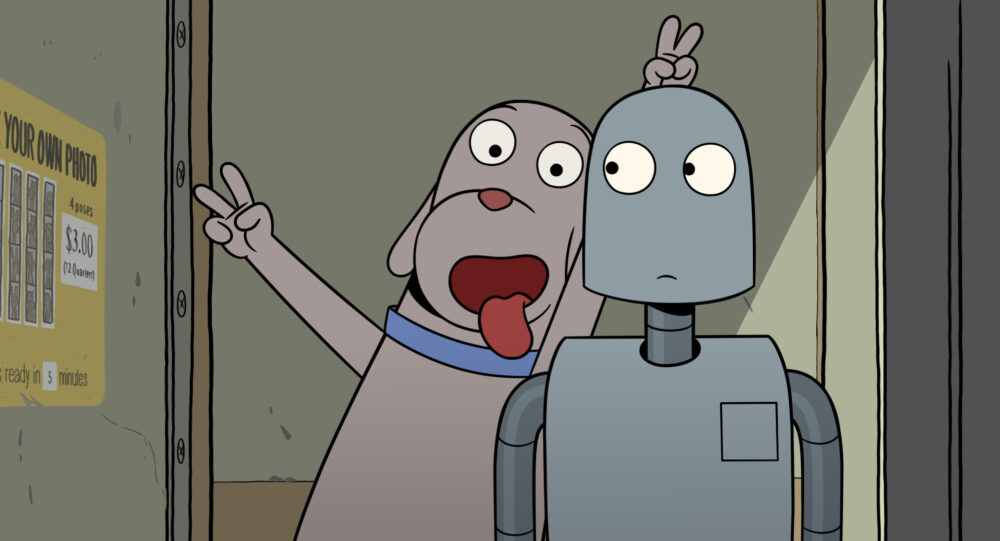
Which animated movies or TV shows left a big impression on you growing up?
When I was a kid, Japanese animation had a big impact on me. Shows like Speed Racer, Mazinger Z and Heidi and Marco were huge in Europe back then; of course, Merrie Melodies, Hanna-Barbera cartoons, Popeye. Consuming animation on TV was big for me.
Like everyone else in the world, I grew up with Disney films — Snow White, of course, Dumbo, Lady and the Tramp, 101 Dalmatians, Robin Hood. Then I discovered Studio Ghibli — Porco Rosso, My Neighbor Totoro, Spirited Away. Most people talk about Miyazaki, but I also have to mention Isao Takahata: Films like Graveyard of the Fireflies and The Tale of the Princess Kaguya are in my top list. Also, Mamoru Hosoda’s Wolf Children.
Japanese animation deals a lot with emotion; it’s not only about action or comedy. Then, when I think of animation in Europe, I need to mention Persepolis, Ernest & Celestine, I Lost My Body, and I love stop-motion [such as] Mary and Max and My Life as a Zucchini. Before being a director I am a cinema lover, and I have always loved animation. Guillermo del Toro — his Pinocchio is also a recent favorite of mine — insisted that animation is not a genre, but it’s a medium. Animation has opened my animation in a different way. I hope I will continue to make more animated films.
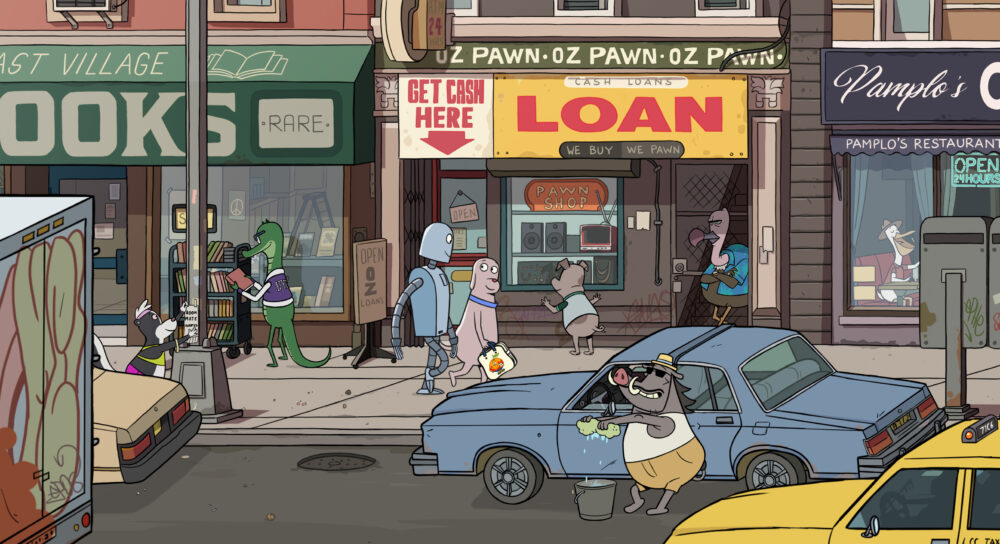
Robot Dreams captures the vibe and look of New York City in the ’80s beautifully. Tell us how you were able to achieve that.
I visited New York many times in the ’70s and ’80s, and I lived there in the ’90s when I studied at New York University to get my master’s in film. This is a love letter from me and my wife, [associate producer] Yuko Harami, who is my closest collaborator in all my films. We really wanted to make a true period film and be faithful to the sounds, the look, the clothes, the stores — all those details, down to the sounds of the alarms, the ambulance sounds on the street. I love the idea of cinema as a time machine.
You even managed to use Earth, Wind & Fire’s iconic song “September,” which plays a pivotal role in the movie.
We all know how hard it is to get the music rights in this business, and [the] more popular the song is, the more expensive it becomes to get those rights. I had the song in the first draft of the script. Sara Varon’s book is divided into chapters, and they’re named after months. So, it seemed clear to me that we had to get the song. In life, we have a great connection with people through the music we share. In Casablanca, you have Paris and “As Time Goes By” and here, we have New York City and “September.”
What do you hope the film will achieve?
I’m a romantic. I’ve been doing this for 35 years, and I still love telling stories. I really love animation. I love to deal with emotion honestly and move people, but I want to be light at the same time. I want the film to be surreal and have surprises. My wife and I always work together, and we both think this is my best film. We believe that all my previous films prepared me to do Robot Dreams. I have so much love for both Robot and Dog, and it’s great to be able share that with the audience.
Watch the trailer below:
Neon will release Robot Dreams in select theaters for award season consideration. The movie will screen at the Animation Is Film Festival in Los Angeles this Saturday (Oct. 21) at 7:30 p.m..




